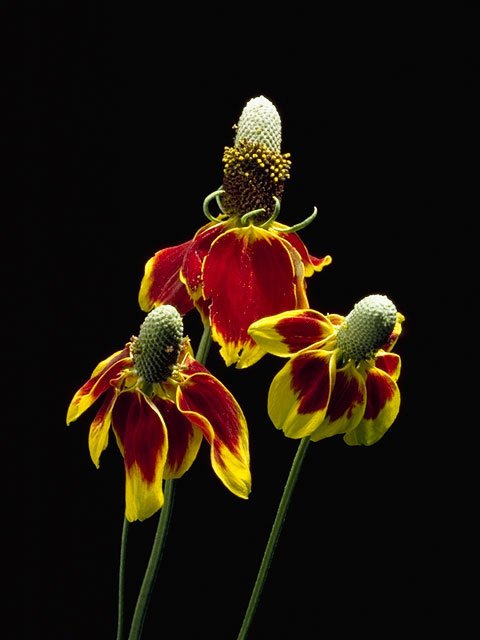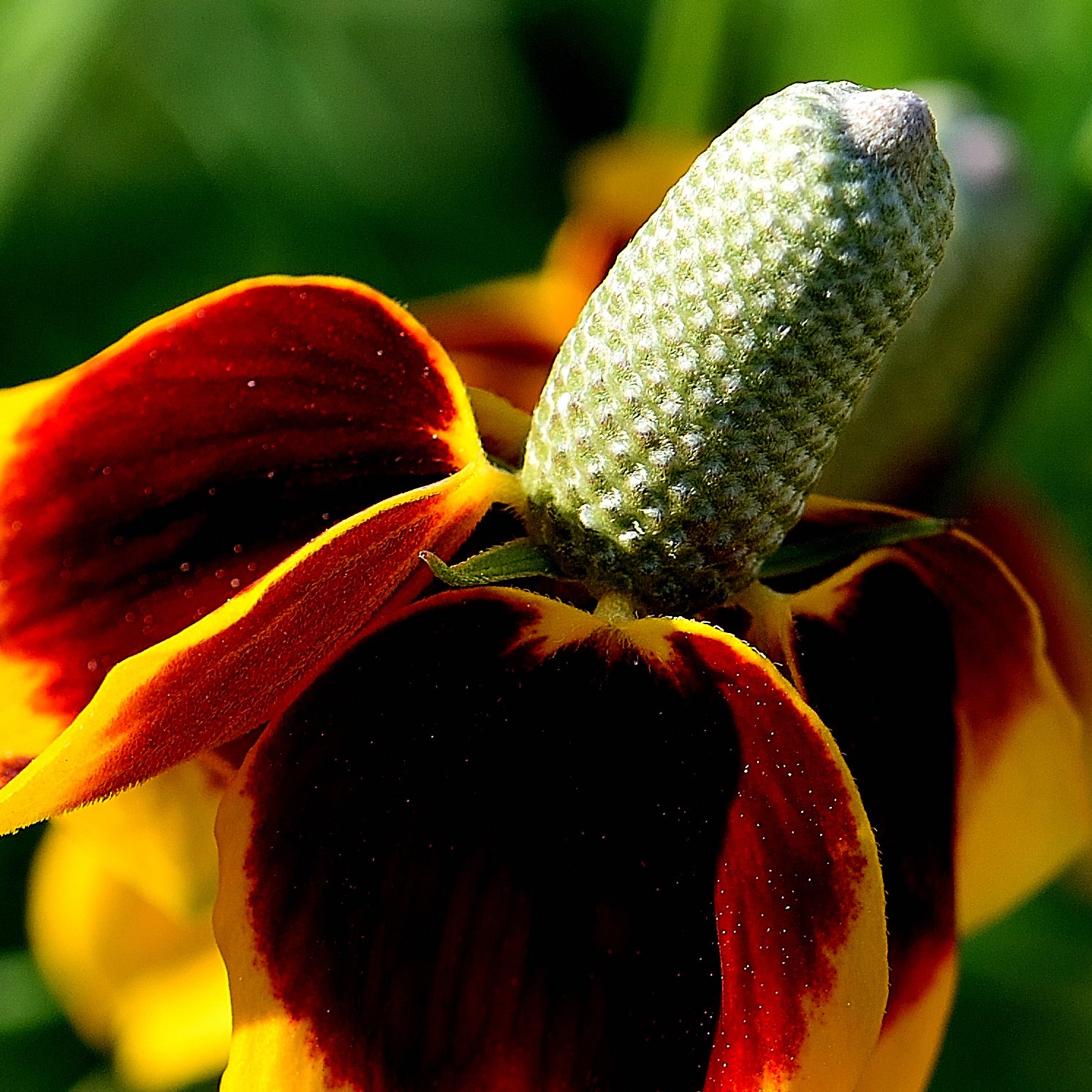There are over 5,000 species of native flowers in the state of Texas. More than 20% of these species are in the Sunflower or Rudbeckia family. Areas in Texas where native lowers can be seen are generally broken into 10 natural regions. For example three local areas are the gulf coast prairies, south Texas plains and east Texas piney woods.
Photo by Robert Delgado. bluebonnet and Evening Primrose at TLCNP.
Each year how abundant the native flower bloom in a given region will depend on a number of factors including rainfall, freezes, warm fronts and sunshine. In general, the most amazing spreads of wildflowers can be found March through May with peaks in April.
Photo by Robert Delgado. Bluebonnets and Indian Paintbrush at TLCNP.
Houston is located in the gulf coast coastal prairies region which runs along the Texas coastline from Orange to South Padre Island. You will see the following native flower species in the gulf coastal prairie region: Black-eyed Susan, Bluebonnet, Indian Blanket, Indian Paintbrush, Mexican Hat, Pink Evening Primrose and Winecup.
Photo by Robert Delgado. Grasshopper in native flowers at TLCNP.
The Lorraine Cherry Nature Preserve is a 20.2 acre pocket of wilderness that has an outer grassy greenbelt with a forested interior that has 2 acres of wetlands. For many years the Friends of TLCNP has asked the City of Houston to withhold mowing portions of the greenbelt that surrounds the Park in order to let native flowers take hold in early spring. Currently the two areas where native flowers can be seen in April are along West 11th Street and the corner of Wister and Shelterwood Drive.
Select this link for native flower information provided by TXDOT.
BELOW ARE JUST SOME OF THE NATIVE FLOWERS THAT CAN BE SEEN AT TLCNP. CLICK ON EACH TO LEARN MORE.
Black-eyed Susan
The flower is 2-3 inches wide with oval shaped leaves that are covered with bristly hairs. The flowers are on stems that are 2-3 feet tall. The flower petals are yellow-orange, slightly curved, each are toothed at its apex
It is the most common native flower and blooms summer thru fall. It attracts numerous butterflies. A sun loving plant that tolerates drought.
Black-eyed Susan at TLCNP.
Bluebonnet
The flowers are 1/2 wide in groups of 2-4 inches long and fragrant. The plant can be 8-16 inches tall. It blooms March-May with fuzzy seed pods appearing after May. There are six species native to Texas.
Interesting fact: Bluebonnets have both white and purple-red spots on its florets. Bees are extremely attracted to the bright white spots and can collect a large quantity of high-quality pollen from the florets. As Bluebonnets age, the floret white spot turns purple due to lack of pollen and bees are less attracted to this color.
Bluebonnet at TLCNP.
Photo by Robert Delgado. Honey bee on Bluebonnet at TLCNP.
Indian Blanket
Flowers are 1-2 inches wide on stems that are 1-2 feet tall. One plant can have over 100 hundred flowers.
The flowers are pinwheel shaped with petals red at the base and the yellow tips have three teeth at the end. Colors may vary from plant to plant, some with more red others with more yellow.
As a cut flower, it has a vase life of six to ten days. The bloom period can be prolonged by deadheading and supplemental summer watering.
It blooms May-August and attracts both butterflies and bees. Common buckeye and checkerspot butterflies use this plant as a host plant.
Indian Blanket.
Photo by Robert Delgado,
Indian Paintbrush
The flowers are 1 inch creamy white to pale yellow in color. Fun fact: Indian Paintbrush doesn’t have red flowers. They have red-colored tip leaves that grow below the flower.
The plant is 8-24 inches tall with green and red narrow leaves that are 1-4 inches. Blooms March-May.
It relies on other plans to grow. Once its roots come in contact with another plant it latches on to those roots to gain additional nutrients. The slender tap root along with it’s parasitic nature make it hard to transplant.
Photo by Robert Delgado,
Mexican Hat
Flower heads are 1-3 inches tall on stalks 1-3 feet tall. It prefers full sun and tolerates drought.
The sombrero-shaped flower heads sits on top a leafless stalk. Each flower features a long narrow center disk. The flowering heads has 3-7 yellow drooping petals or yellow and red-brown drooping petals.
Blooms June-September. Attracts both butterflies and bees.
Mexican Hat.
Photo by Robert Delgado, Mexican Hat.
Pink Evening Primrose
The flower is 2-3 inches wide. The plant is 6-24 inches tall and sprawling 1-2 feet wide that spreads to form colonies. Flower buds open into pink or white flowers that are leaf axils on slender, downy stems. The cup-shaped blossoms are lined with pink or red veins. Blooms March-July.
It is hardy and drought resistant species that can form colonies of considerable size.
As the name implies, the flowers open in the evening. The flower bud can open so rapidly that the movement can almost be observed.
Photo by Robert Delgado,
Photo by Robert Delgado,
Winecup
This plant stems sprawl along the ground up to 3 feet wide, forming a thick mat up to 1 foot tall. Rounded, hairy leaves are deeply lobed and cleft. The 1 1/2 to 2 1/2 in. wide flowers have a white spot at the base of their five, maroon petals. The flowers, which are borne on long stalks, close in the evening, open in the morning and remain closed after pollination.
The Winecup, which blooms March-June, attracts both bees and butterflies. In addition, the Winecup serve as the larval host plant for the Gray Hairstreak butterfly.
Winecup.














